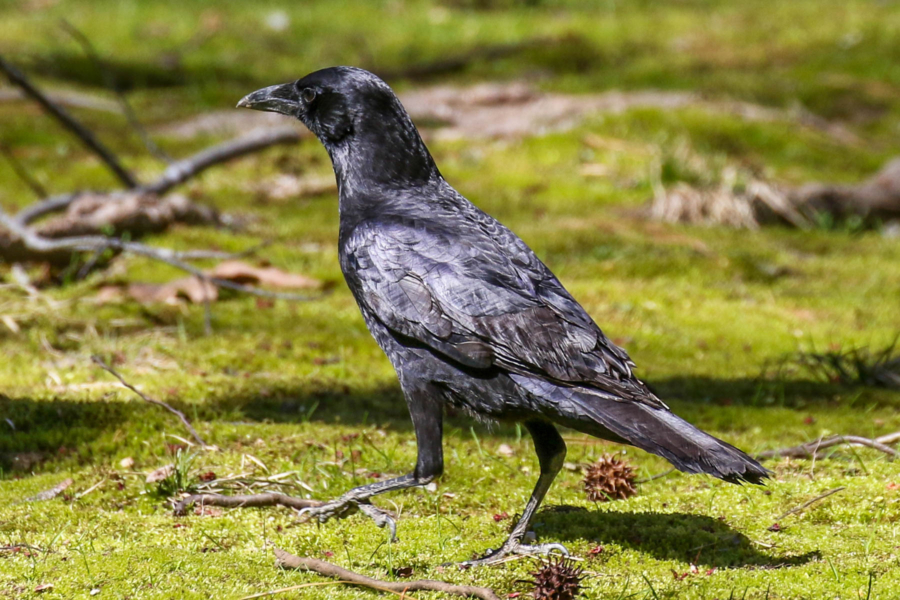Image

The American crow is one of the Chesapeake’s most misunderstood birds
The American crow is common across the Chesapeake region and can be easily identified by its recognizable call
 The American crow is a large, all black bird that is common across the Chesapeake region. (Photo courtesy of markdolfi/iNaturalist CC BY-NC, cropped and toned)
The American crow is a large, all black bird that is common across the Chesapeake region. (Photo courtesy of markdolfi/iNaturalist CC BY-NC, cropped and toned)In American culture, crows are one of the least popular birds, up there with pigeons and turkey vultures. With an intensely black color, eerie call and reputation for feeding on dead things, the bird has come to be associated with bad luck and even death. But the truth is, the crow is just a misunderstood bird with many wonderful traits.
Part of the reason for their negative reputation is that crows are part scavengers, meaning they eat dead animals and decaying matter (known as carrion). In Medieval times, crows were said to follow armies, hoping for a corpse to snack on, and today, you’ll find them in landfills or on the side of the road, waiting for roadkill. However, this is only a small part of their diet. As opportunistic feeders, crows will eat pretty much anything they can get their hands on, from insects, seeds and fruit, to small mammals, fish, reptiles and the eggs of other birds.
Crows are also very intelligent (which is how they figured out how to follow Medieval armies around!) In Native American myths and legends, crows are often characterized as wise creatures and symbols of good luck. According to legends from the Piscataway Tribe, which is indigenous to parts of the Chesapeake Bay, crows were originally rainbow-colored and had a pretty singing voice, but then it lost its colors and acquired its present-day hoarse voice.
Unlike the majority of bird species native to the Bay watershed, American crows do not migrate south for the winter. To keep warm, they will sleep in communal roosts that can be anywhere from a few hundred up to two million crows. After the long winters, female crows search for their long-term mate. Male crows will display affection by fluffing up their body feathers, and spreading their wings and tails while singing a short song.
Once females have selected their mates, the pair will build their nest together from twigs, weeds, bark and animal hair near the trunk of a tree or on a horizontal branch. Juvenile crows will venture from their nests about 40 days after hatching, and will often remain with their parents until they reach maturity at 2-4 years. Because American crows can breed once or twice a year for about five years and the young birds stay with their family, the young will also help build new nests and raise subsequent young as one big crow family.
As one of the most common birds in the Chesapeake region, the American crow flies under the radar with its very typical songbird behaviors. While they stand out in their intense looks and unique voice, the family-oriented American crows are not quite as scary as they’re made out to seem.
To learn more about other birds native to the Chesapeake Bay region, visit our field guide.